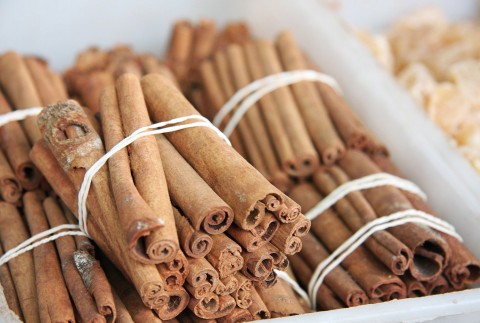Cinnamon
Cinnamon (pron.: /ˈsɪnəmən/ sin-ə-mən) is a spice obtained from the inner bark of several trees from the genus Cinnamomum that is used in both sweet and savoury foods. While Cinnamomum verum is sometimes considered to be “true cinnamon”, most cinnamon in international commerce is derived from related species, which are also referred to as “cassia” to distinguish them from “true cinnamon”.
History
In classical times, four types of cinnamon were distinguished (and often confused):
- Cassia (Hebrew קציעה qəṣi`â), the bark of Cinnamomum iners from Arabia and Ethiopia, and literally means ‘the peel of the plant’ which is scraped off the tree.
- True Cinnamon (Hebrew קִנָּמוֹן qinnamon), the bark of C. verum (also called C. zeylanicum) from Sri Lanka
- Malabathrum or Malobathrum (from Sanskrit तमालपत्रम्, tamālapattram, literally “dark-tree leaves”), several species including C. tamala from the north of India
- Serichatum, C. cassia from Seres, that is, China.
Cinnamon has been known from remote antiquity. It was imported to Egypt as early as 2000 BC, but those who report that it had come from China confuse it with cassia.[7]
The Hebrew Bible makes specific mention of the spice many times: first when Moses is commanded to use both sweet cinnamon (Hebrew: קִנָּמוֹן, qinnāmôn) and cassia in the holy anointing oil;[8] in Proverbs where the lover’s bed is perfumed with myrrh, aloes, and cinnamon;[9] and in Song of Solomon, a song describing the beauty of his beloved, cinnamon scents her garments like the smell of Lebanon.[10] Cassia was also part of the ketoret, the consecrated incense described in the Hebrew Bible and Talmud. …
http://en.wikipedia.org/wiki/Cinamon
Foto:


